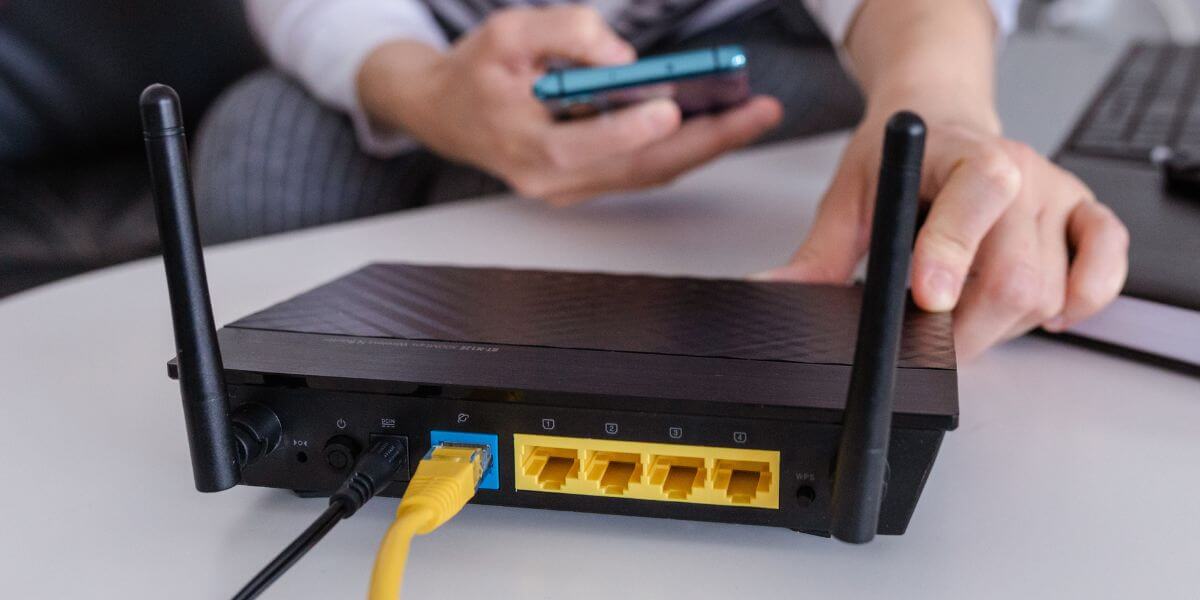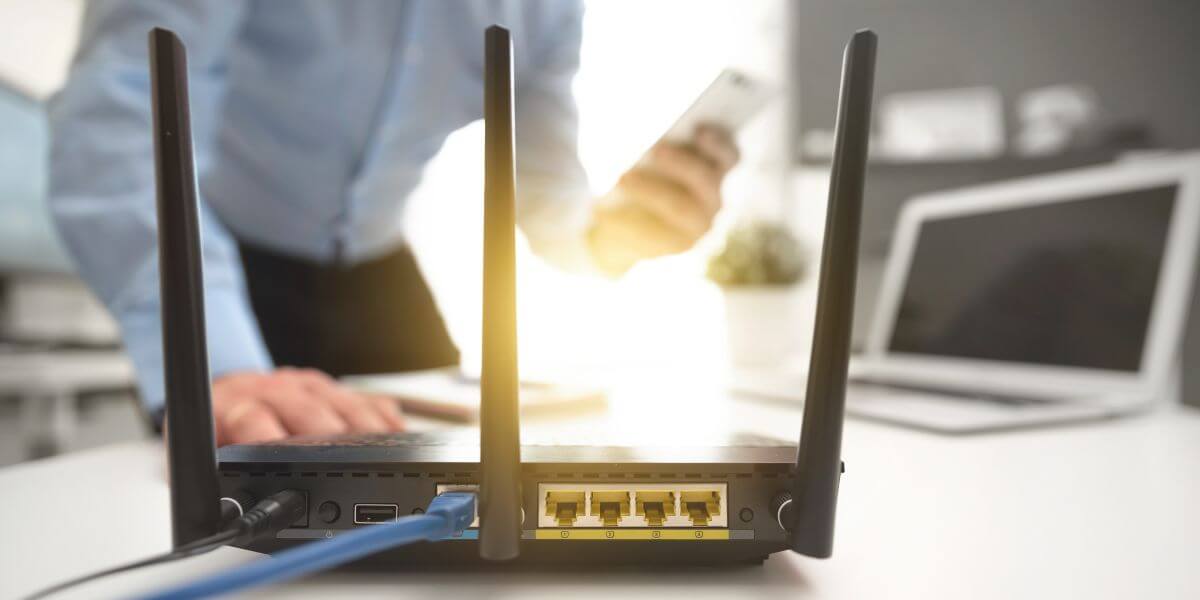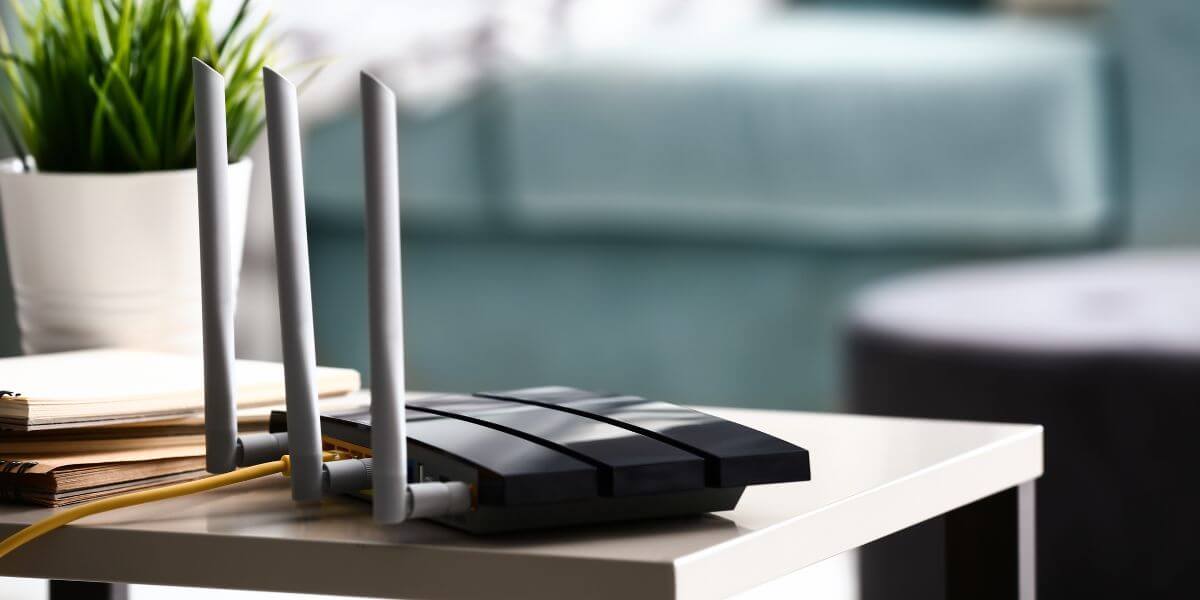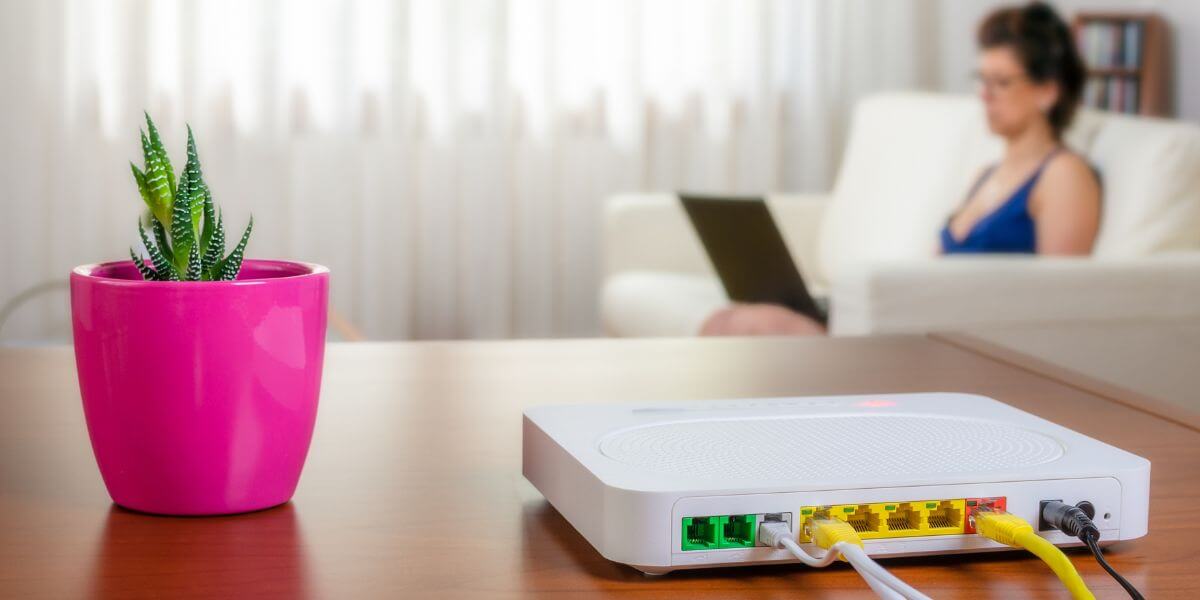Lower your internet bill
61% of people overpay for their internet.
Are you one of them?
Unlock exclusive offers in your area!
Call now
[tel]Enter zip code
1 Star is Poor & 5 Stars is Excellent.
* Required
Written by Sam Watanuki - Pub. Jan 23, 2025 / Updated Jan 23, 2025
Table of Contents
Are you happy with your Internet service?
About the author
Weak router security is like leaving your front door unlocked in a busy neighborhood. Unbeknownst to many, cybercriminals are constantly scanning home networks, looking for weak spots to access your personal info, banking details, or even your smart home devices. But with the right security settings, your router can go from being an open door to a digital fortress.
Your router is the first line of defense against online threats, from protecting your banking info to keeping your smart devices safe. With the average household now connecting over 17 devices to their network [1], having the best router and locking it down has never been more important.
When you set up a new router, the default settings typically prioritize convenience over security. Manufacturers ship routers with generic passwords and outdated security protocols, leaving your network exposed to potential threats. Setting up your router’s security settings the right way helps build a strong defense against unwanted access.
Router security is all about multiple layers of protection. It’s not just about having a strong password anymore. Today’s routers come with features like guest networks, firewall protection, and automatic security updates. These layers work together to keep your home network safe and your digital life secure.

Secure yourself right away
Setting up your router with the right security settings is key to keeping your home network safe from cyber threats. With just a few simple tweaks, you can protect your personal info, secure your devices, and keep unwanted users out. Let’s break down some of the most important router settings to help keep your network secure.
Your router’s network name, or SSID (Service Set Identifier), serves as your network’s public identity. While it might be tempting to use descriptive names like “Smith Family WiFi" or your apartment number, these can give attackers valuable information about your network. Choose a neutral name that doesn’t reveal personal details or your location.
The WiFi password represents your first line of defense. Create a strong password using:
Setting up a separate guest network provides visitors internet access while keeping your main network secure. This segregation prevents guest devices from accessing your networked computers, printers, and smart home devices. Most routers support multiple networks, allowing you to maintain convenience without compromising your family’s security.
Router manufacturers regularly release firmware updates to patch security vulnerabilities and add new features. Enable automatic updates when possible, or check manually every few months. Outdated firmware can leave your network exposed to known security flaws that criminals actively exploit.

Understanding security protocol
Security protocol refers to the method your router uses to encrypt and transmit data [2]. While older routers may only support WEP (Wired Equivalent Privacy) or WPA (WiFi Protected Access), these protocols have known vulnerabilities and should be avoided. Instead, choose a router that supports WPA2 (WiFi Protected Access 2) or WPA3, the latest and most secure options.
WPA3 (WiFi Protected Access 3) represents the latest and most secure protocol for home networks [3]. This standard offers stronger encryption and better protection against common attacks. If your router supports WPA3, enabling it should be a priority, especially for households using smart home devices or frequently accessing sensitive information online.
While WPA3 offers the best protection, not all devices support this newer standard. WPA2 (with AES encryption) provides strong security and broader compatibility with older devices. Avoid using older protocols like WEP or original WPA, as these contain known vulnerabilities that hackers can easily exploit.

Staying secure
Some other security features and settings to consider for your router include:
Your router’s built-in firewall acts as an essential first line of defense, protecting your network from potential cyber threats. By enabling and properly configuring your firewall, you can:
Each device that connects to your network has a unique identifier known as a MAC (Media Access Control) address [4]. This address acts like a digital fingerprint, allowing your network to recognize specific devices. By enabling MAC address filtering, you can create a whitelist of trusted devices that are allowed to access your network. This adds an extra layer of security on top of your standard password protection, ensuring that only approved devices can connect.
While this feature isn’t foolproof and may require manual updates when adding new devices, it provides an additional safeguard against unauthorized access to your network.
Disable remote management unless absolutely necessary. If you need remote access, change the default remote access port and use strong authentication methods. This prevents attackers from attempting to access your router’s settings from outside your network.
Accessing your router’s settings requires logging into its administration panel, typically through a web browser. Follow these steps:
Remember to document any changes you make, in case you need to troubleshoot connection issues later.

Keep your home network secure
As home networks grow more complex, router security continues to evolve. Next-generation features like AI-powered threat detection, automatic quarantine of suspicious devices, and enhanced internet of things (IoT) protection are becoming standard. Mesh network systems also now offer whole-home coverage without compromising security, making it easier to maintain strong protection throughout your living space.
Securing your router might seem overwhelming, but the investment in time pays off in protected privacy and peace of mind. Start with the basics:
Ready to find the perfect router with robust security features for your home? Enter your zip code below to discover available options and providers in your area. Our comparison tool will help you evaluate security features, speeds, and prices, ensuring you find the right connection to protect your digital life.
Sources:
[1] Parks Associates. “Parks: Average U.S. Internet Home Had 17 Connected Devices in 2023".
[2] TechTarget: “Wireless security: WEP, WPA, WPA2 and WPA3 differences".
[3] PCMag. “What Is WPA3? How to Set Up More Secure Wi-Fi on Your Router".
About the author
Congratulations, you qualify for deals on internet plans.
Speak with our specialists to access all local discounts and limited time offers in your area.
[tel]61% of people overpay for their internet.
Are you one of them?
Unlock exclusive offers in your area!
Call now
[tel]Enter zip code